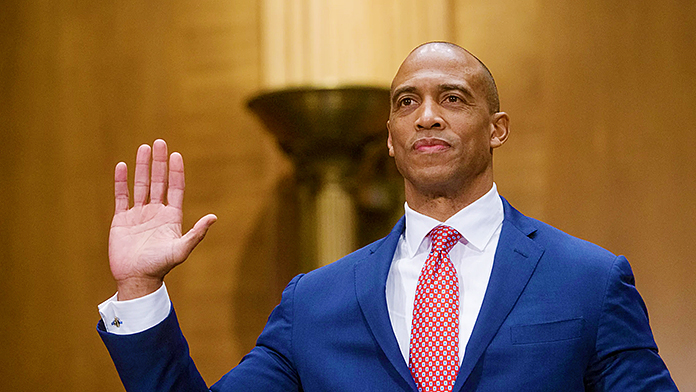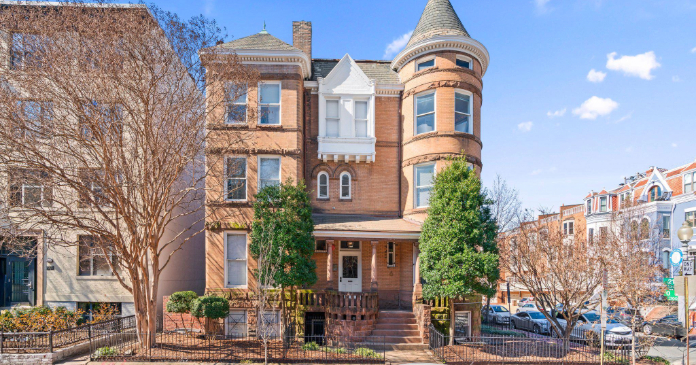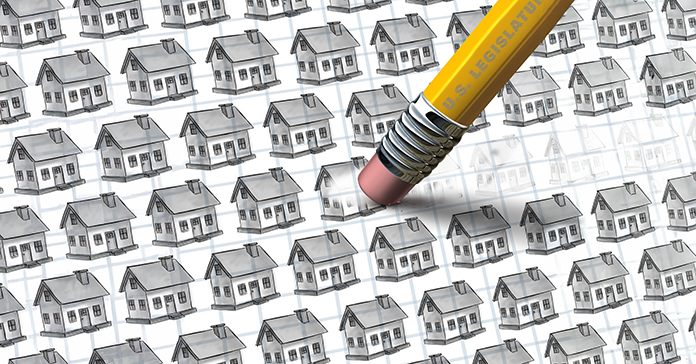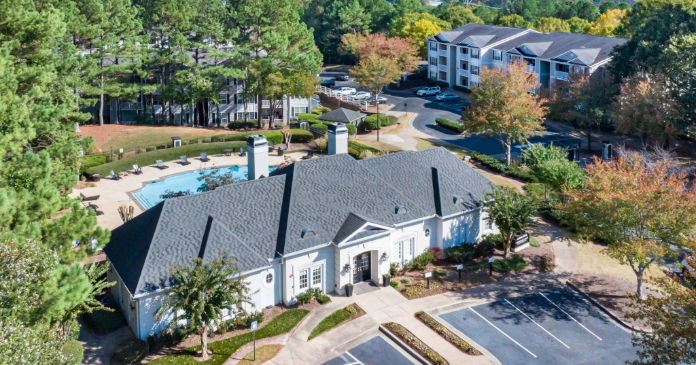What do Johns Hopkins’ serious-minded students want in the way of off-campus housing? JHU off-campus coordinator Mireille Miller will tell you there’s almost no way to predict their needs. Students seem to change their minds collectively year to year.
Do they want to live as a foursome in a charming old row house in Charles Village, two blocks from the Baltimore campus? Is a two-bedroom the current hot find? Maybe an efficiency apartment is more practical this time around?
Each spring, there’s one major trend for off-campus living, Miller says, and it’s her job to help kids locate what they’re looking for.
Recently, in light of two nearby Charles Village murders in the past year and a half, students have not clamored for the older long, tall “row houses.” This season, security has been the popular buzz word, Miller says “better to live in a high-rise with a key card than in a street-access stone house.”
Due to current space limitations, junior and senior students cannot opt for on-campus dorms, or even nearby off-campus Hopkins-owned housing. Therefore, area landlords have a hip, burgeoning marketplace in which to lease.
Each undergraduate class contains about 1,000 students. Numerous graduate schools are housed on the Charles Village Homewood Campus as well, not including the medical school several miles away.
If change is a happy thing, students should enjoy the coming months in Charles Village. Change is in the air. Hopkins is in the process of constructing a 618-bed multi-use building called Charles Commons with two- and four-person suites containing kitchenette and lounge and a Barnes and Noble on floor one. There will be room enough for some juniors and seniors in this mega-village. Nearby, on the 3200 block of St. Paul Street, the same development firm in charge of building Charles Commons, Struever Brothers Eccles and Rouse, is building two-bedroom condominiums complete with parking garages. On the east side of the block will be 68 residential units for sale and 95 parking spaces within a 12,500-square-foot building; on west side will be 82 more condos and 575 parking spots on 28,000 square feet.
Parents are expected to leap at these.
CAPITAL CRUNCH
Baltimore is a sizzling real-estate market that’s getting lots of press. D.C. commuters want to move here because, though housing costs are rising fast, prices are cheap compared to 50 miles down south in the nation’s capital.
“The thing that’s going to be very interesting to me is to see how Charles Village is going to be affected,” Miller says. “Those mom-and-pop buildings, or even the commercial ones, they’re going to be almost forced to renovate their properties. But with that comes higher rents.”
Traci Angel, associate director of housing at Hopkins, isn’t so sure.
“It’s hard to tell whether the rents are going to go way up or come down,” Angel says. “The buildings in the area have had a large student population for so long; with the redevelopment, there will be far fewer [students]. It will be interesting to see what landlords will do “either the rents will come down further in terms of competition, or renovation will occur.”
At this point, Hopkins houses about 2,000 beds in six buildings, two directly on the campus, the others a five-minute walk across the main Charles Street drag. Dorm rates increase about 4 percent annually. A single room with mandatory meal plan costs between $11,000 and $12,000 a year.
Will fancy Charles Commons and even the old dorms soon cost a great deal more with inflation?
“With the new Commons building opening in September 2006 and all of the security that was added, we’ll have to see,” Angel says. “Limits are set by the trustees.”
When a student moves off-campus, he or she saves money generally, but sacrifices cafeteria dining and campus security.
“Living in a row house, it’s not going to cost you as much, but you’re not getting the same things,” Angel says. “Standards in terms of update, renovations, and after-hours maintenance, and the security, you’re going to pay for them.”
While kids live on campus, what’s their top demand?
“Of course, technology is very important to them, at this point. Ethernet connections, cable TV, and more are important amenities for them. All of our buildings are cable ready,” Angel says.
WHO ARE THESE KIDS?
“There are a number of people who are well-off, and you find people on funding, too,” Angel says.
What is Hopkins’ relationship with off-campus landlords?
Fairly tight, according to Miller. The housing office works in close connection with most area landlords, gathering information, posting rentals — provided owners fill out an extensive questionnaire.
“There are also times when we go to bat for our students in terms of issues they may be having with managers in the area,” Angel says. “But I think in general it’s a very positive rapport.”
Property manager Vita Leon manages four area buildings for local firm Real Estate Dimensions, three in Charles Village, one more within walking distance.
Wyman Towers on St. Paul Street, one block from the heart of the campus, is popular because of its proximity, high ceilings, and old-fashioned charm, Leon says.
The 145-unit building offers two-bed-two-bath suites for $1,250 per month. Heat, a giant expense, is covered by New Dimensions. (A new memo urges everyone to keep windows closed, keep the thermostat set as low as possible, and be sure to turn off the radiator when they leave town for a weekend.) Half the residents are students, half are professional adults.
Each year, the company participates in the Hopkins housing fair.
RATIONAL SECURITY
Parents are worried about security; they always have been. Hopkins is close to downtown Baltimore, after all. People often get mugged on Charles Street. In response to their concern, Dimension owners have added an intercom entry system and more exterior lights. They circulate memos each month reminding residents about various security policies. Don’t buzz in a stranger; never prop open the front door.
How does Leon describe the building owners, Brian and Tina King and Dave Holmes? Tina King earned a degree in real estate development from JHU.
“They’re frugal, but they’re in tune with their roots,” Leon says.
Do these owners expect to change with the times and rehab their 1950s-era buildings with flashier interiors, doormen and swimming pools?
“There are no plans to alter the popular houses at this time,” Tina King says. Besides, all JHU students have access to the top-notch campus fitness center.
“We just put wireless network access in two buildings,” King says. “They certainly do ask, “Where’s my Central AC? Where’s my pool?’ Unfortunately, we can’t give that to the residents. But we can give them charm.”
King says the poured concrete in her oldest building is so sturdy that a recent cigarette fire never left the room in which it started. Leon credits a stellar maintenance team with keeping the four ships running tight and clean.
But what about the sizzling market? Doesn’t King want to cash in?
“We could get more,” she says. “But we’ve had these buildings eight years and we’ll continue to have them as they are. We’re not going to go into any condo conversion.”
King and her partners think of their buildings as the happy medium between pricey luxury — the kind available around the corner at a swanky hotel called The Inn at the Colonnade, where a handful of affluent students rent — and the crumbling row houses that simply aren’t well-kept.
“There have to be some buildings without a doorman,” King adds. “The student will know where he wants to live.”
Author: Betsy Boyd
















